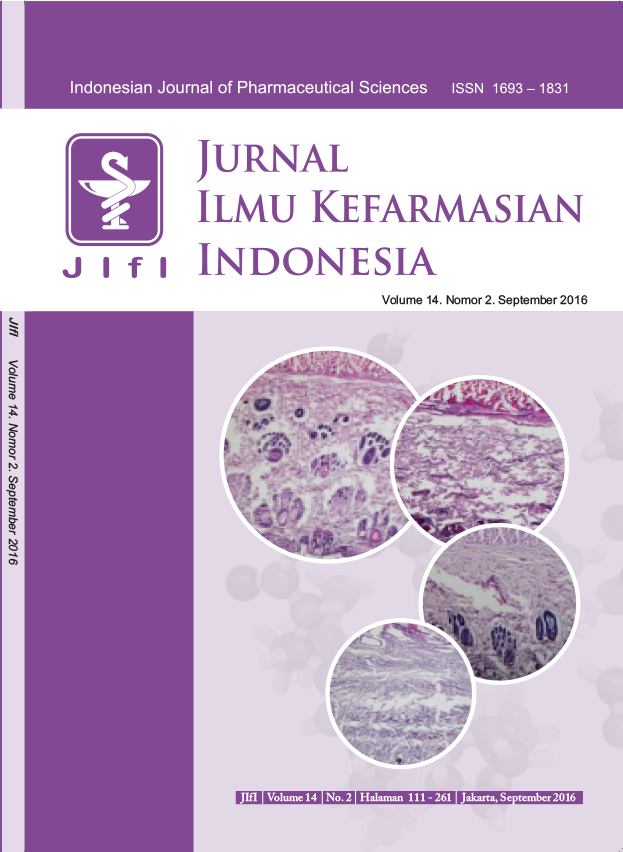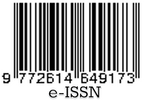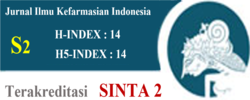Prediksi Sifat Farmakokinetik, Toksisitas dan Aktivitas Sitotoksik Turunan N-Benzoil-N’-(4-fluorofenil)tiourea sebagai Calon Obat Antikanker melalui Pemodelan Molekul
Abstract
Merancang obat baru dapat dilakukan melalui modifikasi struktur yaitu dengan mengubah gugus tersubstitusi yang menyebabkan perubahan sifat fisikokimia, farmakokinetik, toksisitas dan aktivitas masing-masing senyawa. Perubahan tersebut dapat diprediksi melalui uji in silico. Penelitian ini bertujuan untuk memprediksi sifat fisikokimia, proses farmakokinetik (ADME), toksisitas dan aktivitas sitotoksik dari 23 senyawa turunan N-benzoil-N’-(4-fluorofenil)tiourea sebagai calon obat anti kanker. Uji in silico dilakukan dengan cara doking senyawa yang akan diprediksi aktivitasnya dengan enzim target SIRT1 kode pdb. 4I5I. Hasil doking berupa energi ikatan yang digambarkan dengan nilai Rerank Score (RS), dengan menggunakan program Molegro Virtual Docker. Senyawa dengan nilai RS kecil diprediksi mempunyai aktivitas yang besar. Hasil uji in silico menggunakan program pkCSM dan Protox online tool dapat disimpulkan bahwa sebagian besar turunan N-benzoil-N’-(4-fluorofenil)tiourea mempunyai sifat farmakokinetik yang baik, menimbulkan toksisitas yang relatif rendah dan mempunyai aktivitas sitotoksik yang lebih besar dari ligan pembanding 4I5_601, dan senyawa N-(4-fenilazobenzoil)-N’-(4-fluorofenil)tiourea merupakan senyawa yang diprediksi mempunyai aktivitas sitotoksik paling besar.
Licencing
All articles in Jurnal Ilmu Kefarmasian Indonesia are an open-access article, distributed under the terms of the Creative Commons Attribution-NonCommercial-ShareAlike 4.0 International License which permits unrestricted non-commercial used, distribution and reproduction in any medium.
This licence applies to Author(s) and Public Reader means that the users mays :
- SHARE:
copy and redistribute the article in any medium or format - ADAPT:
remix, transform, and build upon the article (eg.: to produce a new research work and, possibly, a new publication) - ALIKE:
If you remix, transform, or build upon the article, you must distribute your contributions under the same license as the original. - NO ADDITIONAL RESTRICTIONS:
You may not apply legal terms or technological measures that legally restrict others from doing anything the license permits.
It does however mean that when you use it you must:
- ATTRIBUTION: You must give appropriate credit to both the Author(s) and the journal, provide a link to the license, and indicate if changes were made. You may do so in any reasonable manner, but not in any way that suggests the licensor endorses you or your use.
You may not:
- NONCOMMERCIAL: You may not use the article for commercial purposes.
This work is licensed under a Creative Commons Attribution-NonCommercial-ShareAlike 4.0 International License.





 Tools
Tools





















